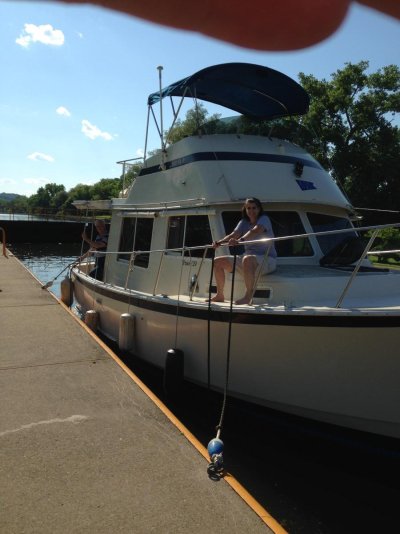Capt.Bill11
Guru
There is another concept entirely on commercial vessels. An entire round turn then figure 8s until you can fit no more on the bits and NO locking hitch (ever). The saying goes: a full bitt(cleat) is a happy bitt. Unfortunately most yachts have woefully undersized cleats.
Yes, well, then the next time I'm on a vessel with massive bollards and 2"- 3" lines I'll remember that.
For cleats I'll stick with half a wrap, a cross over and a twist to finish.




